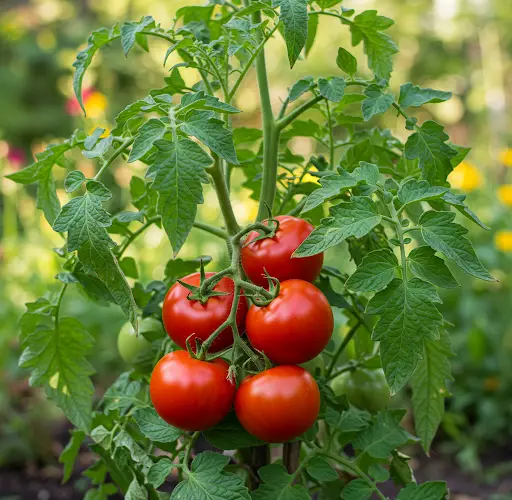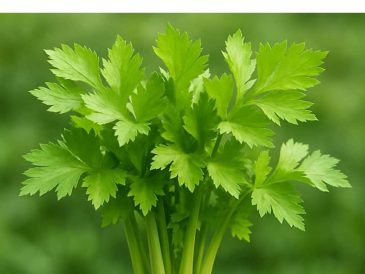The Best Method for Growing Tomatoes to Produce an Abundant Harvest
Tomatoes are one of the most rewarding crops to grow, providing a delicious and versatile ingredient for countless meals. However, to maximize your tomato yield, it’s essential to use the right growing techniques. This guide will walk you through the best method to grow tomatoes for a bountiful harvest, covering everything from soil preparation to plant care and pest control.
Choosing the Right Tomato Variety
Before planting, select a tomato variety suited to your climate and growing conditions. There are two main types:
- Determinate (Bush) Tomatoes: These grow to a fixed height and produce fruit all at once, making them ideal for container gardening and small spaces.
- Indeterminate (Vining) Tomatoes: These continue growing and producing fruit throughout the season, requiring staking or caging for support.
Popular high-yield varieties include:
- Cherry Tomatoes (Sweet 100, Sun Gold) – Excellent for snacking and salads.
- Beefsteak Tomatoes (Big Boy, Brandywine) – Large, juicy tomatoes perfect for slicing.
- Roma Tomatoes (San Marzano, Amish Paste) – Ideal for sauces and pastes.
Preparing the Soil for Maximum Growth
Tomatoes thrive in rich, well-draining soil with plenty of organic matter. Follow these steps to prepare your soil:
- Choose a Sunny Location: Tomatoes need at least 6-8 hours of direct sunlight daily.
- Enrich the Soil: Mix compost, aged manure, or organic fertilizer into the soil before planting.
- Check Soil pH: Tomatoes prefer a pH between 6.2 and 6.8. Adjust acidity using lime (to raise pH) or sulfur (to lower pH) if needed.
- Improve Drainage: If you have heavy clay soil, add sand or compost to enhance aeration and drainage.
Planting Tomatoes for a Strong Start
Starting Seeds Indoors (Optional)
- Begin seeds indoors 6-8 weeks before the last frost date.
- Use seed-starting mix and keep seedlings in a warm, sunny location.
- Harden off plants by gradually exposing them to outdoor conditions before transplanting.
Transplanting Tomato Seedlings
- Dig Deep Holes: Plant seedlings deeper than they were in their containers—burying 2/3 of the stem encourages root growth.
- Space Plants Properly: Keep indeterminate varieties 24-36 inches apart and determinate types 18-24 inches apart.
- Add Support Early: Install stakes, cages, or trellises at planting time to prevent damage to the roots later.
- Water Well: Hydrate seedlings thoroughly after planting to reduce transplant shock.
Best Growing Practices for a Heavy Yield
1. Consistent Watering
- Water deeply 2-3 times a week rather than lightly every day.
- Avoid overhead watering to prevent fungal diseases.
- Use mulch to retain moisture and regulate soil temperature.
2. Fertilizing for Growth and Fruit Production
- Apply a balanced fertilizer (10-10-10) when planting.
- Once flowers appear, switch to a low-nitrogen fertilizer (5-10-10) to encourage fruit development.
- Add calcium-rich amendments like crushed eggshells to prevent blossom end rot.
3. Pruning for Healthier Plants
- Remove lower leaves to improve airflow and reduce disease risk.
- Pinch off suckers (small shoots between the main stem and branches) to direct energy toward fruit production.
- Prune excess foliage on indeterminate plants for better sunlight exposure.
4. Pollination Assistance
- If growing in a greenhouse or indoors, gently shake plants or use a soft brush to transfer pollen between flowers.
- Attract bees and beneficial insects by planting companion plants like marigolds and basil.
Preventing and Managing Pests and Diseases
Common Tomato Pests
- Aphids: Use neem oil or ladybugs to control infestations.
- Tomato Hornworms: Hand-pick caterpillars or introduce natural predators like parasitic wasps.
- Whiteflies: Spray leaves with insecticidal soap or use sticky traps.
Common Tomato Diseases
- Blight (Early & Late): Prevent by spacing plants properly and using fungicides when necessary.
- Powdery Mildew: Avoid overhead watering and ensure good airflow.
- Blossom End Rot: Maintain consistent watering and supplement with calcium.
Harvesting for Maximum Tomato Production
- Pick at Peak Ripeness: Harvest tomatoes when they are fully colored and slightly firm to the touch.
- Frequent Harvesting: Regularly picking ripe tomatoes encourages plants to produce more fruit.
- Store Properly: Keep tomatoes at room temperature for the best flavor; avoid refrigerating unless necessary.
Conclusion
By following these expert tips, you can significantly increase your tomato yield and enjoy an abundance of fresh, homegrown tomatoes throughout the season. Whether you’re growing in a garden, containers, or greenhouse, the key to success is proper soil preparation, consistent care, and proactive pest management. Start planting today and experience the joy of harvesting a bumper crop of delicious tomatoes!




